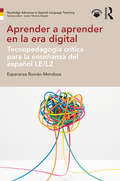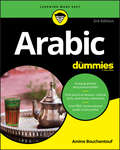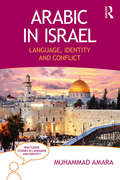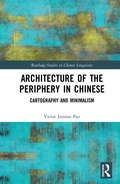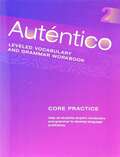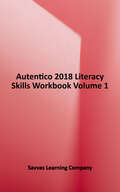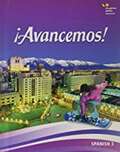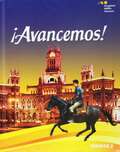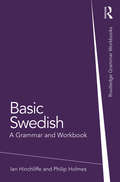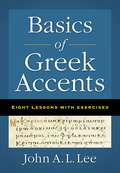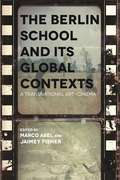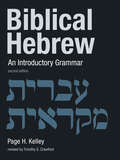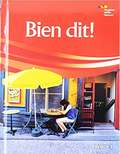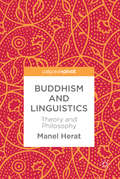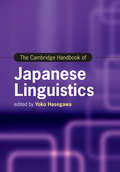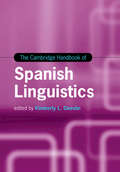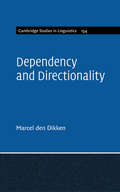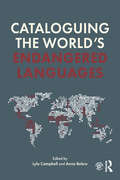- Table View
- List View
Aprender a aprender en la era digital: Tecnopedagogía crítica para la enseñanza del español LE/L2
by Esperanza Román-MendozaAprender a aprender en la era digital provides a comprehensive, state-of-the-art account that empowers readers to leverage learning technologies to promote second language learner autonomy. Written entirely in Spanish, the book covers a breadth of innovative topics in the teaching of Spanish via and with technology, such as emerging pedagogies, autonomous and participatory learning, learner agency and identity, teacher development, and post-communicative curriculum design. Key features: a novel and unique approach, combining the latest research on learning autonomy and instructional technologies in language learning; an emphasis on the connections between theory and practice, with concrete suggestions for using technology in the classroom; an extensive selection of curricular and pedagogical tools that can be easily adapted to various teaching and learning environments and needs; a broad selection of bibliographical references for further reading and research; a bilingual glossary of key techno-pedagogical terms; a catalogue with over 250 tools for second language learning and teaching, with contextualized examples of their practical application; a comprehensive eResource with a wealth of additional materials, including access to a database of technological tools and best practices in teaching Spanish with technology. Written in a clear and accessible manner, Aprender a aprender en la era digital is ideal for instructors of Spanish at all educational levels. The book will also be of great interest to teachers of languages other than Spanish, as well as graduate students pursuing a degree in Spanish, Educational Technology or Language Education.
Arabic For Dummies
by Amine BouchentoufStart reading and speaking Arabic Arabic For Dummies helps readers start speaking Modern Standard Arabic in no time. Whether you’re a student, traveler, or work in business or government, you’ll find this title to be packed with practical lessons, cultural facts, and handy references. Inside, you’ll find guidance on basic grammar, as well as the necessary vocabulary to make introductions and greetings, use proper etiquette, make small talk, make transportation arrangements, order food and beverages, ask directions, deal with money, shop, access recreation, and handle an emergency. Features new and revised content Offers a revamped, user-friendly design to both pedagogy and organization Includes expanded coverage of grammar, verb conjugations, and pronunciations Get free access to conversational audio tracks online If you want to start speaking Arabic, this go-to book is packed with practical instruction, cultural facts, and handy references you won’t want to be without!
Arabic in Israel: Language, Identity and Conflict (Routledge Studies in Language and Identity)
by Muhammad AmaraIn Arabic in Israel, Muhammad Amara analyses the status of Arabic following the creation of the State of Israel and documents its impact on the individual and collective identity of Israel’s Palestinian Arab citizens. The interplay of language and identity in conflict situations is also examined. This work represents the culmination of many years of research on Arabic linguistic repertoire and educational policy regarding the language of the Palestinian citizens of Israel. It draws all of these factors together while linking them to local, regional and global developments. Its perspective is interdisciplinary and, as such, examines the topic from a number of angles including linguistic, social, cultural and political.
Architecture of the Periphery in Chinese: Cartography and Minimalism (Routledge Studies in Chinese Linguistics)
by Victor Junnan PanArchitecture of the Periphery in Chinese offers a comprehensive survey on the fine structure of the sentence peripheral domain in Mandarin Chinese from a cartographic perspective. Different functional projections hosting sentence-final particles, implicit operators and other informational components are hierarchically ordered according to the "Subjectivity Scale Constraint" functioning at syntax-discourse interface. Three questions will be essentially addressed: What is the order? How to determine such an order? Why such an order? This research not only gives a thorough examination of the peripheral elements in Chinese but also improves the general understanding of the ordering issue in the left-periphery crosslinguistically. This book is aimed at scholars interested in Chinese syntax or generative syntax.
Autentico 2018: Leveled Vocabulary and Grammar Workbook Level 2
by Prentice-Hall StaffAutentico 2018 Leveled Vocabulary and Grammar Workbook Level 2
Autentico 2018 Literacy Skills Workbook Volume 1
by Savvas Learning CompanyThis Literacy Skills workbook can be used with levels A, B, 1, and 2 of Autentico. Also, thematically linked readings and skills-based practice activities available.
¡avancemos!: Student Edition Level 2 (¡avancemos!)
by Houghton Mifflin Harcourt¡avancemos!: Student Edition Level 2 2018 (Spanish Edition
¡Avancemos! Spanish 1A
by Estella Gahala Patricia Hamilton Carlin Audrey L. Heining-BoyntonNIMAC-sourced textbook
¡Avancemos! Spanish 1B
by Estella Gahala Patricia Hamilton Carlin Audrey L. Heining-BoyntonNIMAC-sourced textbook
Basic Swedish: A Grammar and Workbook (Grammar Workbooks)
by Ian Hinchliffe Philip HolmesBasic Swedish: A Grammar and Workbook combines an accessible basic reference grammar and related exercises in one volume, and covers most of the topics that students might expect to deal with in their first year of learning Swedish. Each of the 25 units discusses one or more grammar topics, with examples that are subsequently practised in the exercises that follow. The book introduces the contemporary language against a backdrop of Swedish culture, society, geography, customs and history. Each unit ends with a cultural text that outlines an aspect of Swedish culture and exemplifies and consolidates the grammar topic examined in the unit. Features include: clear grammatical explanations with examples in Swedish and English vocabulary based on a major corpus of written Swedish in order to guarantee authenticity and relevance cross-references to other units over 100 exercises with a key to all the correct answers full vocabulary list at the end of the book. The book is suitable both for independent study and for class use. It can be used by absolute beginners and those who have advanced a little further.
Basics of Greek Accents: Eight Lessons with Exercises
by John A. LeeBasics of Greek Accents by John A. L. Lee is a compact, student-friendly, and practical guide to accents for students of both classical and biblical Greek. In eight simple lessons students will learn the basics of ancient Greek accentuation.Ideal for beginners who are just learning the language or for intermediate students who have learned some Greek but are unsure of their accents this handy resource avoids theory and concentrates on taking the learner through the essentials in a natural sequence and reinforces learning by means of simple exercises.
The Berlin School and Its Global Contexts: A Transnational Art Cinema (Contemporary Approaches to Film and Media Series)
by Jaimey Fisher Marco Abel Lisa Haegele Robert Dassanowsky William Fech Alice Bardan Ira Jaffe Inga Pollmann Roger Cook Michael Sicinski Lutz Koepnick Chris Homewood Brad Prager Gerd Gemünden Roland Végso Hester BaerThe Berlin School and Its Global Contexts: A Transnational Art-Cinema came about in light of the Museum of Modern Art (MOMA)’s 2013 major exhibition of works by contemporary German directors associated with the so-called Berlin School, perhaps Germany’s most important contemporary filmmaking movement. Christoph Hochhäusler, the movement’s keenest spokesperson, stated that "the Berlin School, despite what the label suggests, is not a specifically German phenomenon. All over the world there are filmmakers exploring related terrain." In response to this "transnational turn," editors Marco Abel and Jaimey Fisher have assembled a group of scholars who examine global trends and works associated with the Berlin School. The goal of the collection is to understand the Berlin School as a fundamental part of the series of new wave films around the globe, especially those from the traditional margins of world cinema. For example, Michael Sicinski and Lutz Koepnick explore the relation of the Berlin School to cinema of Southeast Asia, including Apichatpong Weerasethakul and Tsai Ming-liang; Ira Jaffe and Roger Cook take a look at Middle Eastern film, with Nuri Bilge Ceylan and Abbas Kiarostami, respectively. The volume, however, also includes essays engaging with North American filmmakers like Kelly Reichardt and Derek Cianfrance as well as European auteurs like Antonioni, Tarr, Porumboiu, McQueen, and the Dardennes. Bringing German cinema into dialogue with this series of global cinemas emphasizes how the Berlin School manifests—whether aesthetically or thematically, politically or historically—a balancing of national particularity with global flows of various sorts. Abel and Fisher posit that since the vast majority of the films are available with English subtitles (and at times also in other languages) and recent publications on the subject have established critical momentum, this exciting filmmaking movement will continue to branch out into new directions and include new voices. The Berlin School and Its Global Contexts folds German-language cinema back into conversations with international as well as transnational cinema. This volume will be of great interest to scholars of German and global cinema.
Biblical Hebrew: An Introductory Grammar
by Page H. KelleyA standard, much-used textbook updated and improved Comprehensive in scope, this carefully crafted introductory grammar of Biblical Hebrew offers easy-to-understand explanations, numerous biblical illustrations, and a wide range of imaginative, biblically based exercises. The book consists of thirty-one lessons, each presenting grammatical concepts with examples and numerous exercises judiciously selected from the biblical text. These lessons are accompanied by eleven complete verb charts, an extensive vocabulary list, a glossary of grammatical terms, and a subject index. In this second edition Timothy Crawford has updated the text throughout while preserving the Page Kelley approach that has made Biblical Hebrew so popular over the years.
Buddhism and Linguistics: Theory and Philosophy
by Manel HeratThis edited collection brings linguistics into contact with a millennia of works by Buddhist scholars. Examining the Buddhist contemplative tradition and its extensive writings from an interdisciplinary perspective, the authors bridge the gap between such customs and human language. To do so, they provide chapters on linguistics, history, religious studies, philosophy and semiotics. Uniting scholars from three different continents and from many disciplines and institutions, this innovative and unique book is sure to appeal to anyone interested in Buddhist traditions and linguistics.
The Cambridge Handbook of Japanese Linguistics (Cambridge Handbooks In Language And Linguistics)
by Yoko Hasegawa<P>The linguistic study of Japanese, with its rich syntactic and phonological structure, complex writing system, and diverse sociohistorical context, is a rapidly growing research area. This book, designed to serve as a concise reference for researchers interested in the Japanese language and in typological studies of language in general, explores diverse characteristics of Japanese that are particularly intriguing when compared with English and other European languages. It pays equal attention to the theoretical aspects and empirical phenomena from theory-neutral perspectives, and presents necessary theoretical terms in clear and easy language. <P>It consists of five thematic parts including sound system and lexicon, grammatical foundation and constructions, and pragmatics/sociolinguistics topics, with chapters that survey critical discussions arising in Japanese linguistics. The Cambridge Handbook of Japanese Linguistics will be welcomed by general linguists, and students and scholars working in linguistic typology, Japanese language, Japanese linguistics and Asian Studies.
The Cambridge Handbook of Spanish Linguistics (Cambridge Handbooks in Language and Linguistics)
by Kimberly L. GeeslinA state-of-the-art, in-depth survey of the topics, approaches and theories in Spanish linguistics today. The language is researched from a number of different perspectives. This Handbook surveys the major advances and findings, with a special focus on recent accomplishments in the field. It provides an accurate and complete overview of research, as well as facilitating future directions. It encourages the reader to make connections between chapters and units, and promotes cross-theoretical dialogue. The contributions are by a wide range of specialists, writing on topics including corpus linguistics, phonology and phonetics, morphosyntax, pragmatics, the role of the speaker and speech context, language acquisition and grammaticalization. This is a must-have volume for researchers looking to contextualize their own research and for students seeking a one-stop resource on Spanish linguistics.
Cambridge Studies in Linguistics: Dependency and Directionality (Cambridge Studies In Linguistics #154)
by Den Dikken MarcelThe direction in which the structure of sentences and filler-gap dependencies are built is a topic of fundamental importance to linguistic theory and its applications. This book develops an integrated understanding of structure building, movement and locality embedded in a syntactic theory that argues for a 'top down' approach, presenting an explicit counterweight to the bottom-up derivations pervading the Chomskian mainstream. It combines a compact and comprehensive historical perspective on structure building, the cycle, and movement, with detailed discussions of island effects, the typology of long-distance filler-gap dependencies, and the special problems posed by the subject in clausal syntax. Providing introductions to the main issues, reviewing extant arguments for bottom-up and top-down approaches, and presenting several case studies in its development of a new theory, this book should be of interest to all students and scholars of language interested in syntactic structures and the dependencies inside them.
Cataloguing the World's Endangered Languages
by Lyle Campbell Anna BelewCataloguing the World’s Endangered Languages brings together the results of the extensive and influential Catalogue of Endangered Languages (ELCat) project. Based on the findings from the most extensive endangered languages research project, this is the most comprehensive source of accurate information on endangered languages. The book presents the academic and scientific findings that underpin the online Catalogue, located at www.endangeredlanguages.com, making it an essential companion to the website for academics and researchers working in this area. While the online Catalogue displays much data from the ELCat project, this volume develops and emphasizes aspects of the research behind the data and includes topics of great interest in the field, not previously covered in a single volume. Cataloguing the World’s Endangered Languages is an important volume of particular interest to academics and researchers working with endangered languages.

